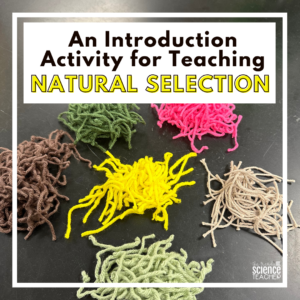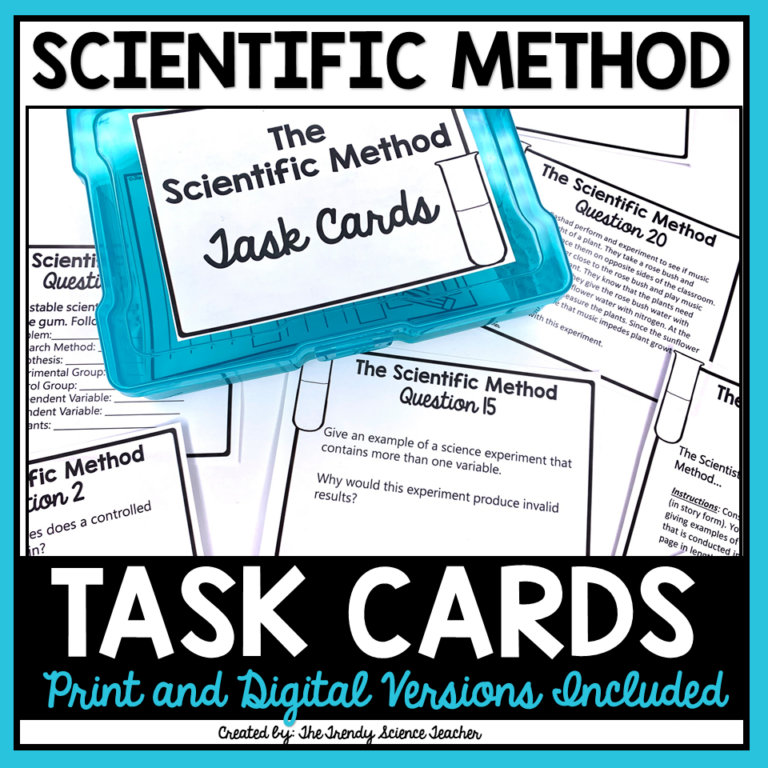
Cell Membrane Bubble Lab
Prior to teaching cell transport in my Biology class, I like to take a deep dive into the cell membrane, its function, structure, and behavior. I truly feel that an extra few days to establish a strong understanding of the cell membrane helps my students better understand cellular transport. Today on the blog, I am sharing how I teach the cell membrane and I will be showcasing one of my favorite labs of the year- the Cell Membrane Bubble Lab!
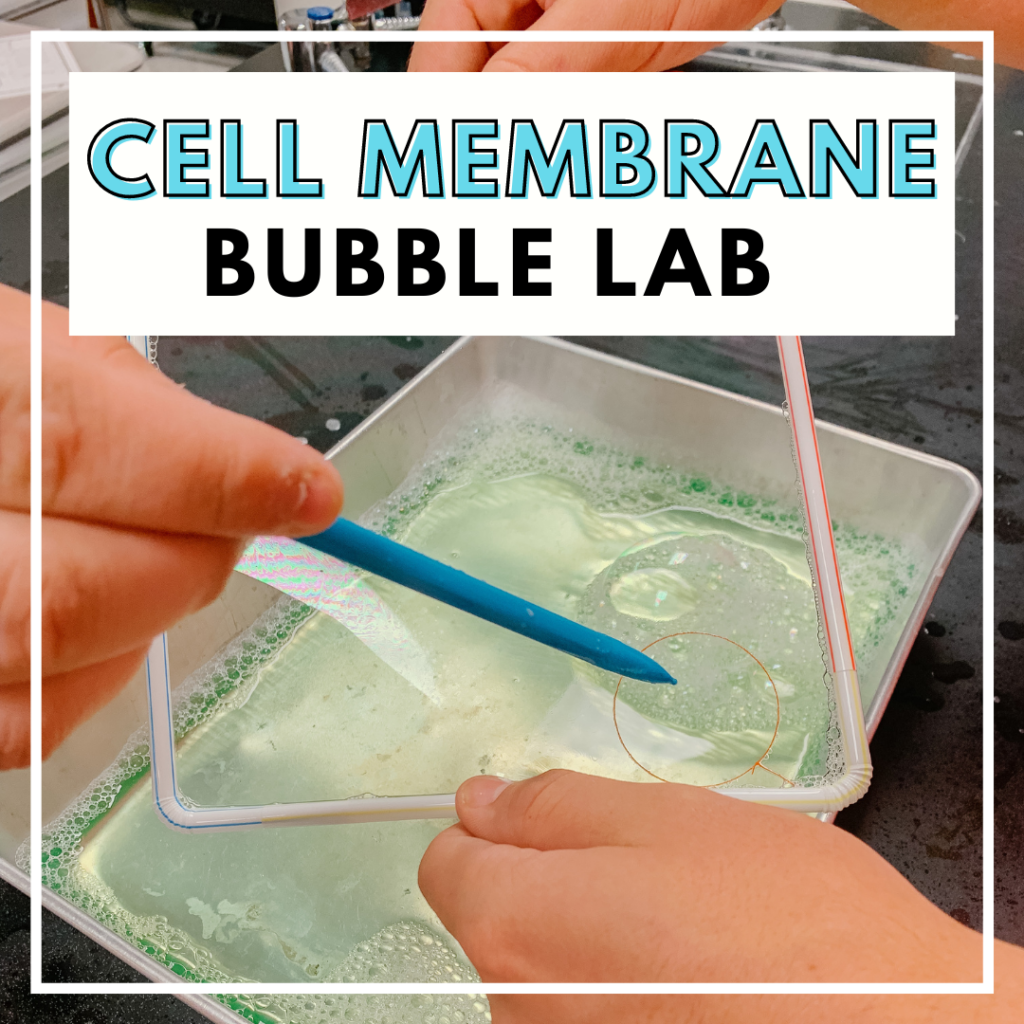
Day 1: Cell Membrane Close Reading Assignment
For the first day of my cell membrane lesson, I like to have my students complete a cell membrane close reading assignment. This assignment includes a really good video clip that the students watch and lots of interactive information that provides a foundation for understanding the cell membrane. The packet is part of my Cells Unit Bundle. Click HERE to check it out!
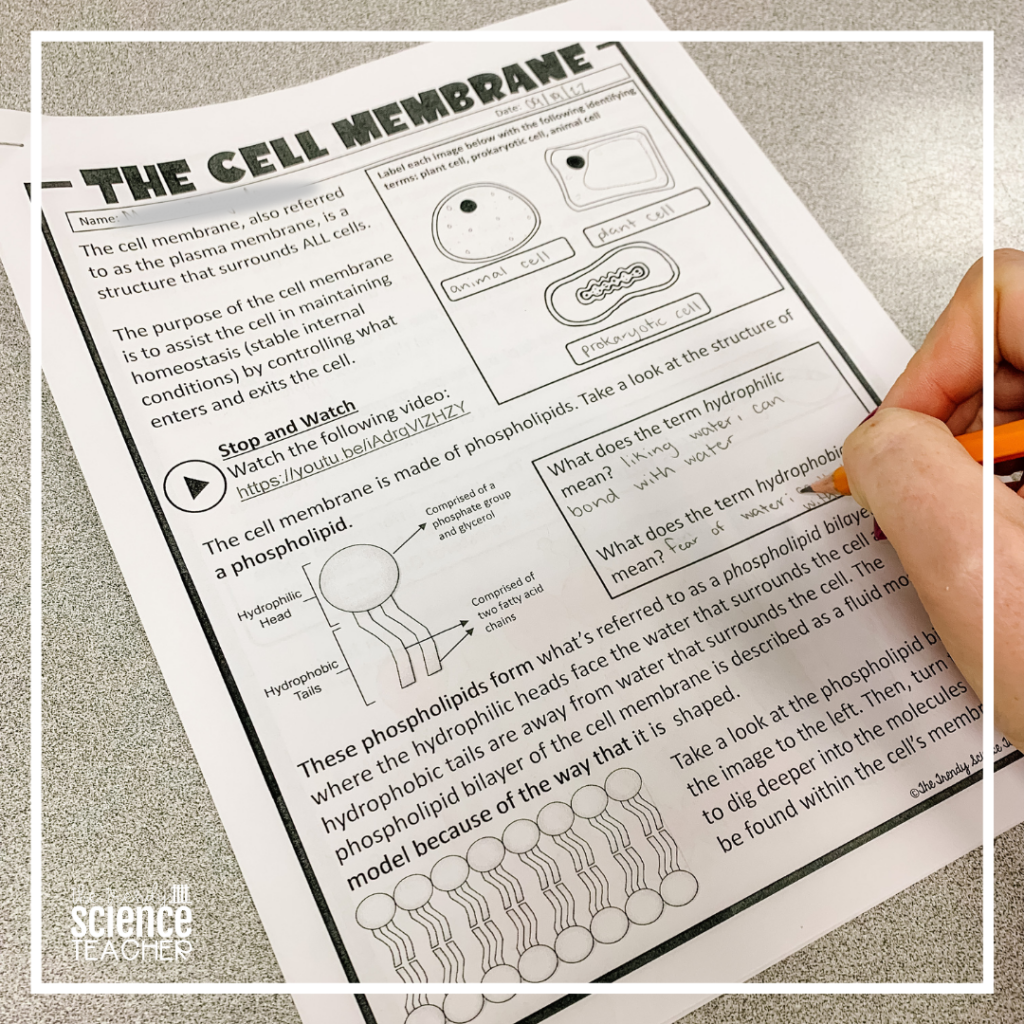
Day 2: Lesson and Activity
On the second day of my cell membrane lesson plan, I teach about the structure and function of the cell membrane and have my students complete a cell membrane “science scribbles” page. After the lesson, I have my students complete an interactive plasma membrane activity from BioMan Biology. It is a GREAT way for students to visualize what types of molecules can and cannot pass through the cell membrane. There is even a complimentary worksheet that you can use on the website. Click HERE to check it out.
Day 3: Cell Membrane Bubble Lab
This lab is simple, yet so effective in helping students better understand the cell membrane. Who doesn’t love a lab that includes BUBBLES?
Lab Prep
For this lab, you will need the following supplies (for each lab group):
- bendable straws (5)
- thread (about 4 inches)
- a pan or shallow dish
- water (900 mL)
- liquid dish detergent (100 mL)
- corn syrup (25 mL)
Start by mixing the bubble solution for each lab group. Here is the recipe that I use for my bubble solution. I multiply this recipe by the number of lab groups that I have and pour roughly 1000 mL of the solution into a shallow tray.

Next, you will need to build straw frames. To create these frames, connect four bendable straws to form a square. You will need one frame for each lab group.
Each lab group will also need a piece of sewing thread tied into a circle. I would say that the circle needs to be about 1-2 inches in diameter.

Place materials (tray of bubble solution, thread, straw, and straw frame) at each lab station and print the lab sheet. I like to use the lab write-up from this website.
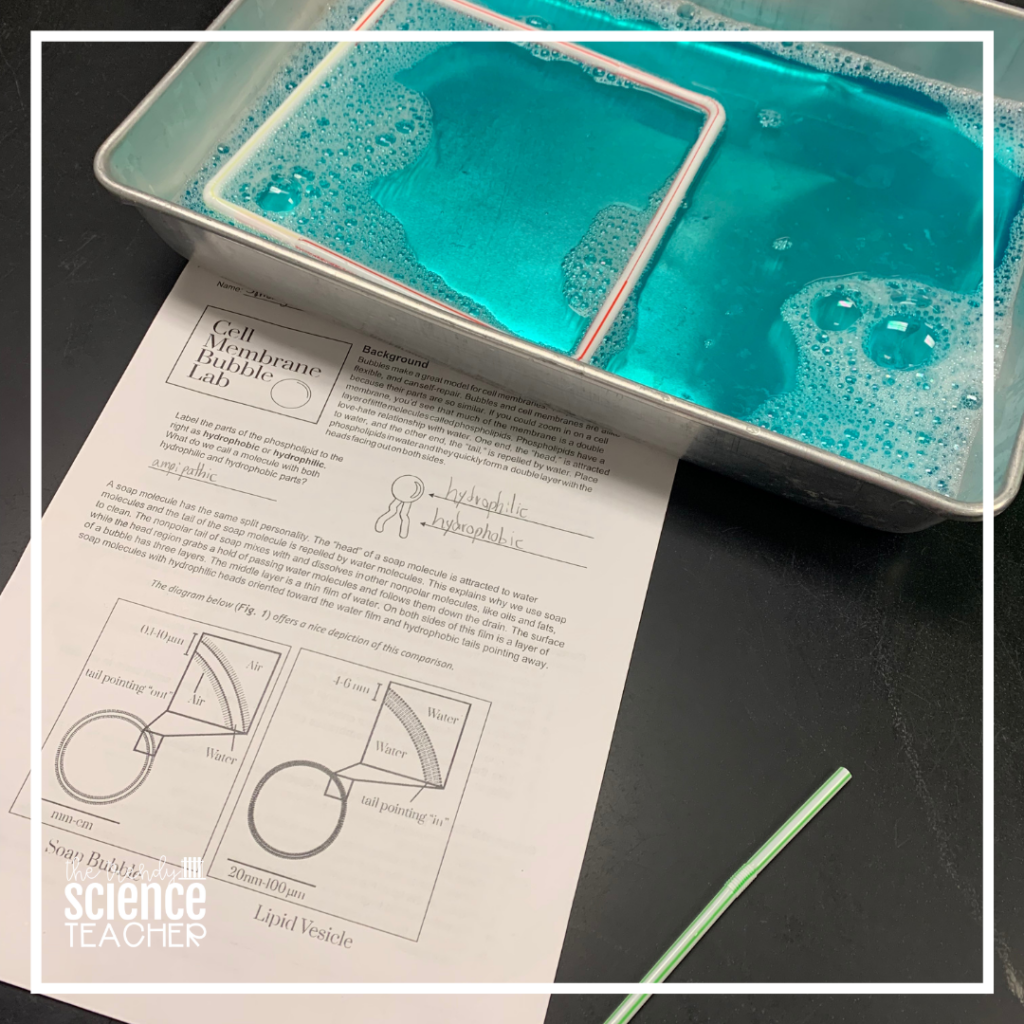
The Lab
During the lab, students investigate the behavior of bubbles and correlate this behavior to the characteristics of the cell membrane. Students investigate the following concepts during the lab:
Concept 1: Membranes are fluid and flexible.
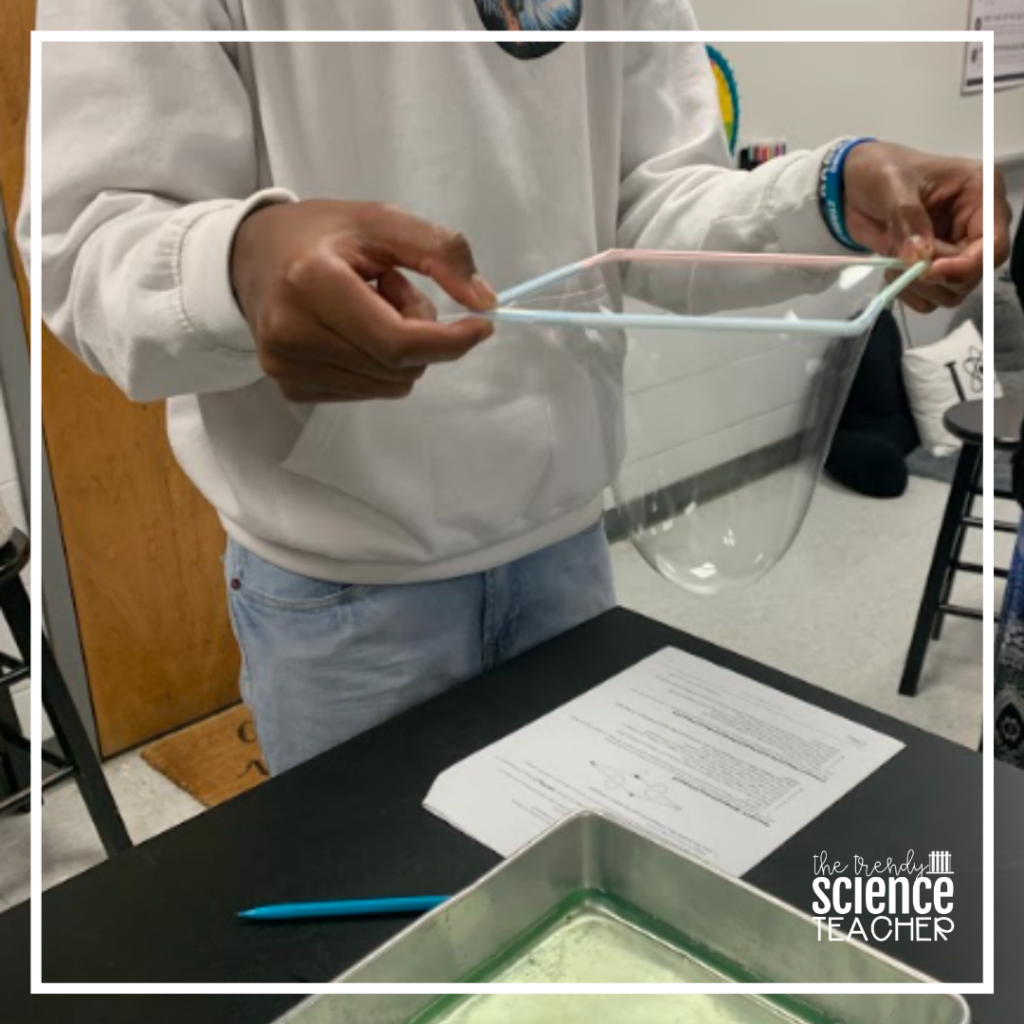
Concept 2: Membranes can self-repair.

Concept 3: Eukaryotic cells feature membrane bound organelles.
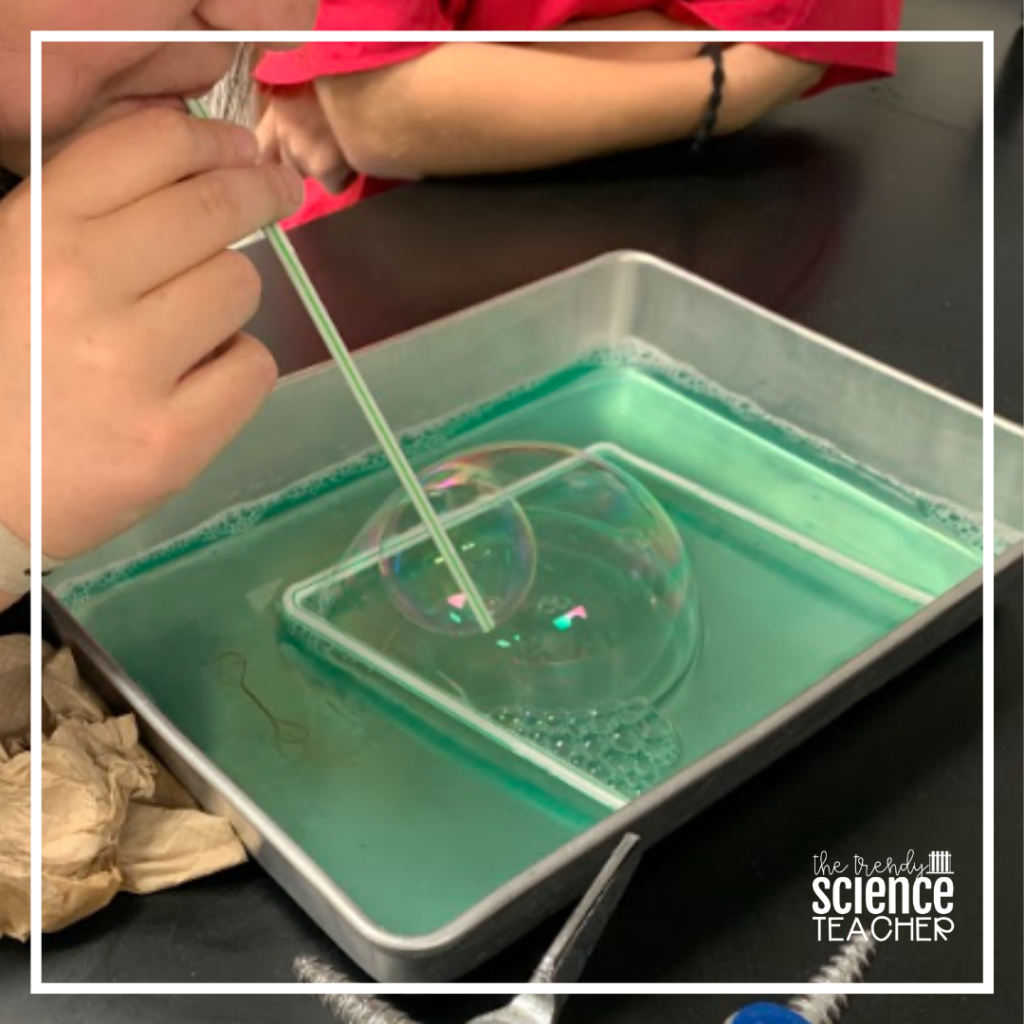
Concept 4: Proteins provide a passageway for large or electrically charged molecules.
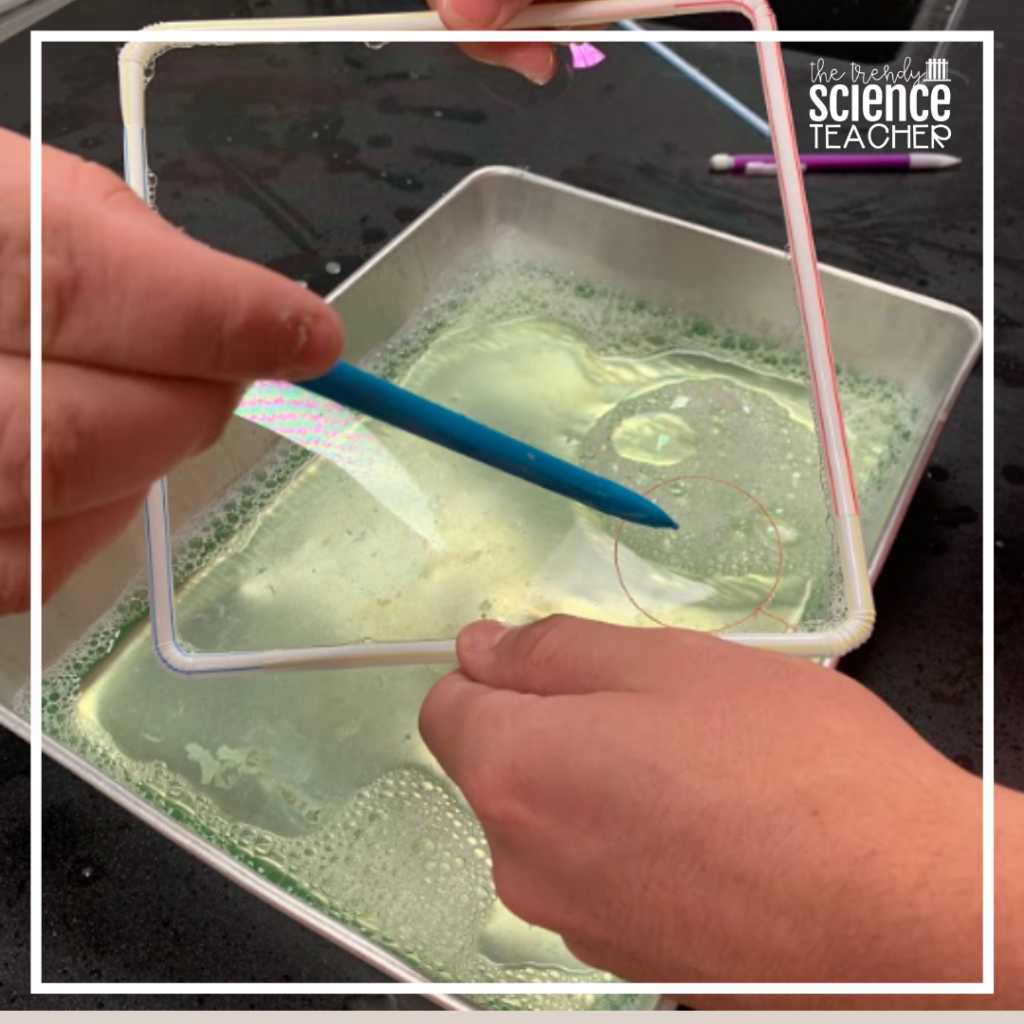
If you teach cellular transport, you’ve got to add this lab to your starting line-up. It’s the perfect way for students to visualize the concepts taught during your transport lesson. Want to grab all of my lessons, notes, labs, activities, worksheets, and assessments for teaching cells? Click HERE!

I hope that you found something that you can use in your classroom- something both engaging and relevant. Until next time…
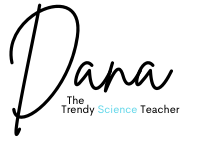
Share it:
- Read more about: BIOLOGY

